All About Ghost Pipe (Monotropa uniflora)
In this article, you’ll learn what the data says about ghost pipe (Monotropa uniflora). Is it endangered? Edible? Poisonous? Find out the answers to all of your questions below!
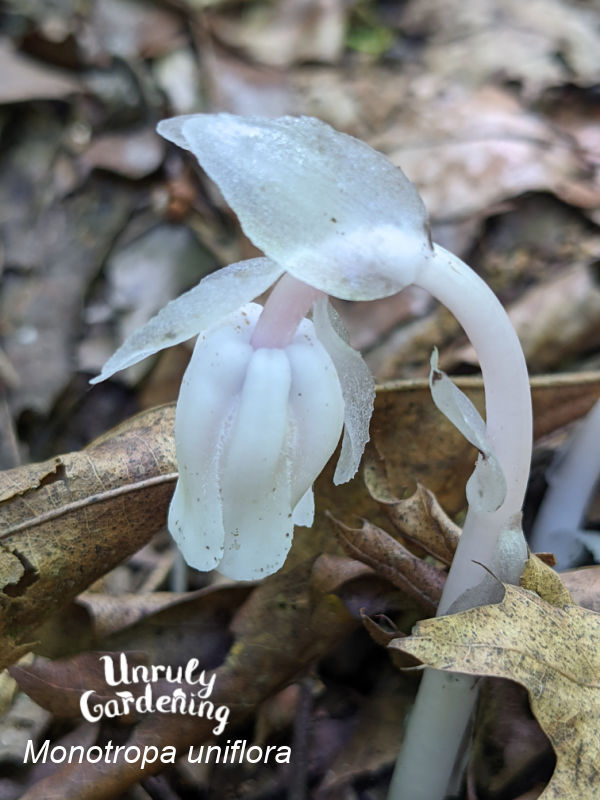
Around June 8 every year, we start finding Ghost Pipe (also called Indian Pipe), mainly around our creek area. This year so far, we’ve had a nice amount of rain and have counted many dozens of clusters of this unique flower rising from the leaves. During dry years, we’ll see less. While the bulk of the flowers bloom in June, we still find sporadic random clumps all the way through September. (Here in zone 7a USA.)
We’ve also seen a lot of confusion, misinformation, and even a few arguments about ghost pipe while navigating foraging groups, so we decided to organize all of the available data and see if we can clear up some of the confusion out there.
Without further ado, let’s jump into the questions and known facts!


Is Ghost Pipe a Mushroom? Or a Flower?
Even though it looks kind of like a mushroom, ghost pipe is a woodland flower.
However, mushrooms and ghost pipe have a connection – because ghost pipe depends on a mushroom network to survive!
Ghost pipe is pale white and doesn’t contain chlorophyll, that green substance that most plants use to turn sunshine into food.
So how does it get its food?
It taps into a mutual relationship that the roots of trees like oak and beech have with certain kinds of fungi (in the Russulaceae family.) The trees and fungi help each other out and they live together in harmony.
Ghost pipe attaches itself to the fungi and gets indirect nutrition from the tree that way. From what we can tell, the interloper doesn’t seem to cause problems for the tree or fungi. Pretty clever!
Can You Grow Ghost Pipe at Home?
Some say it’s super difficult, if not impossible, to cultivate ghost pipe at home. (If you’ve done it though, let us know – a lot of people would be interested, including us!)
You need to have the right tree with the right fungal network in place or the seed won’t germinate, so it’s not just a matter of just sticking some seeds in the ground and waiting for them to grow.
If you see seeds for sale, it’s normally a scam. There is a study where scientists used some complicated finagling to germinate monotropa uniflora and one of them developed a nest-like root cluster after one year in a lab, but that’s pretty far out of the reach of us everyday gardeners!

Is Ghost Pipe on the United Plant Savers Species at Risk List?
No, but sort of.
If you look at the full list of at-risk plants at the United Plant Savers website, you won’t spot ghost pipe, Indian pipe, or monotropa uniflora.
However, in their printable chart version, “Indian Pipe, Monotropa uniflora” is listed as “Requested to Score” along with chaga, wild cherry, solomon’s seal, yaupon, and wild geranium. So perhaps we’ll see it on there one day.
Is Ghost Pipe Endangered?
Yes, no, and maybe. It depends on where you live and whether your state has done the work to study the plant’s status.

States Where It’s At Risk
Here are the states in the US that have Ghost Pipe (Monotropa uniflora) listed as being in trouble:
- Alaska – listed as S1 (S1 = critical imperilment within the state)
- California – listed as 2B.2 (“2B” = Plants rare, threatened, or endangered in California but common elsewhere. “.2” = Moderately threatened in California — 20-80% of occurrences threatened / moderate degree and immediacy of threat.)
- Florida – listed as S3 (S3 = vulnerable) (Monotropa hypopithys listed as S1, but do not see M. uniflora listed on FL Natural Areas Inventory list.)
- Nebraska – listed as S1 (critical imperilment within the state)
- North Dakota – listed as S3 (vulnerable)
- Oklahoma – listed as S1 (critical imperilment within the state) (listed as S2 – imperiled – on the OK Natural Heritage site)
- South Dakota – listed as S1 (critical imperilment within the state)
RarePlants.org has a helpful glossary for when you’re trying to figure out the conservation status of a plant.
States Where It’s Considered Secure:
Then there are a few states that list monotropa uniflora as secure (S5):
- Delaware
- Kentucky
- New Jersey
- New York
- West Virginia
And it’s “apparently secure” (S4) in Montana and Iowa.
As you can see by THIS map at the Nature Serve Explorer many states have unknown statuses. That doesn’t mean that ghost pipe is secure, or that it is at risk in those states, it just means that there’s not enough data for us to know.
(Side note: Monotropa uniflora is also found outside of North America in places such as Nepal, Japan, Taiwan, and parts of Eastern Asia, and Colombia, Mexico, and parts of Central America.)
From what we do know about the plant:
- It has highly specialized growing conditions.
- You cannot grow it from seed at home or commercially.
- The deep rich forests that it depends on for survival are in decline due to strip logging, invasive plant infestations, and human development.
- There’s a risk it could become a trendy herb which could devastate existing populations.
Many people feel that ghost pipe is at the very least a plant that’s in a vulnerable position in many places.

Can You Eat Ghost Pipe?
Ghost pipe isn’t considered to be a good edible. There are reports of a few people eating some, but there are almost as many reports of people feeling ill or strange after doing so. (We aren’t brave enough to try it, so can’t report on the taste!) There are no found reported deaths or hospitalizations from eating ghost pipe, but it’s not recommended.
Besides the risk-to-your-health factor, the plant is way too special for trailside munching, especially when there are other better choices out there. However, ghost pipe can be made into a tincture and is used in small doses for very specific cases in herbal medicine. (More on that below.)
Is Ghost Pipe Poisonous?
This topic comes up in foraging groups A LOT! Let’s break down what the terms mean and what the sources say about ghost pipe containing poisons.
Glycosides, Grayanotoxin, and Andromedotoxin
Peterson’s Field Guide to Medicinal Plants & Herbs lists some Native American uses for “Indian-Pipe” (Monotropa uniflora) then adds: “Safety undetermined; possibly toxic – contains several glycosides”.
What are Glycosides?
Oxford’s English Dictionary describes them as: “a compound formed from a simple sugar and another compound by replacement of a hydroxyl group in the sugar molecule. Many drugs and poisons derived from plants are glycosides.” (Examples of glycosides include steviol glycoside – a harmless natural sweetener made from stevia plant, or the cardiac glycosides in foxglove flowers which can be deadly in some cases.)
What about Grayanotoxins and Andromedotoxins?
Grayanotoxins are neurotoxins found in plants like rhododendron and mountain laurel. Over 25 forms of grayanotoxins have been found in rhododendrons, some more toxic than others, making some plants more toxic than others. Grayanotoxin I is a glycoside toxin; also called andromedotoxin or rhodotoxin.
The information about ghost pipe containing grayanotoxin is based on a single source from 1889. (Yes 1889, not 1989!)
King’s American Dispensatory (written in 1898) says: “A. J. M. Lasché (Pharm. Rundschau, 1889, p. 208) has found in this plant a crystallizable poisonous principle, which also occurs in several other ericaceous plants; it is named andromedotoxin (C31H51O10).”
Digging further, we found Lasché’s full text in Pharmazeutische Rundschau. Volume 7, 1889. (You can read it too on Archive.org.) His experiments showed that Monotropa uniflora contains andromedotoxin. To date, no modern study can be found as a follow-up, so that single source is all the data we have to go on.
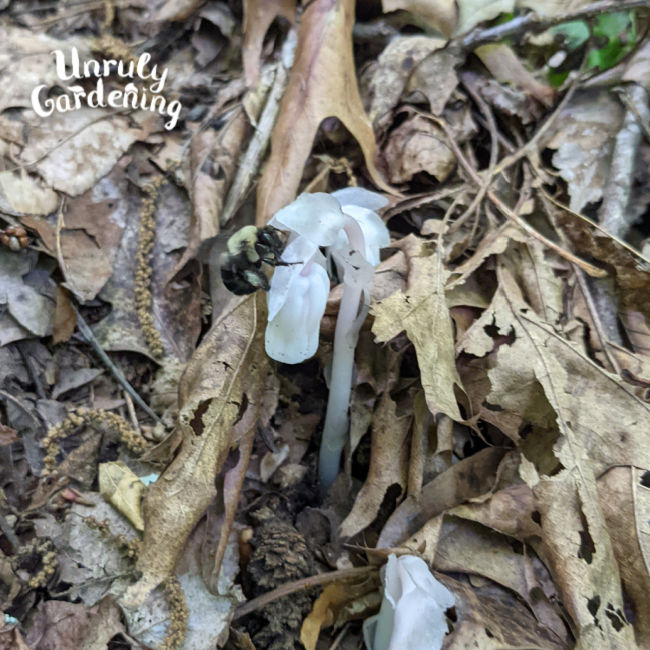
Should You Forage or Pick Ghost Pipe?
Most of the time, the answer is no – you don’t really need to pick ghost pipe flowers!
If you live in a state where ghost pipe is listed as endangered, threatened, or at risk (see above) – this is an easy decision. Take a photo, touch nothing (unless you’re clearing an invasive such as garlic mustard that’s about to choke out the plants in the area), and carefully move on.
If you’re someone who truly needs this strong medicine and lives in an area where it’s considered secure, keep reading.
Before you gather Ghost Pipe, ask yourself these questions:
Why do you want to gather Ghost Pipe?
Stop and think why you want to collect it. Do you truly feel that the plant will benefit you? Are you really going to use it, if you make a tincture, or will it just sit on a shelf? Are you scared of any potential toxicity?
Ghost pipe is strong and used in rather extreme circumstances – unrelenting pain or anxiety attacks that can’t be managed by other herbs.
Don’t pick ghost pipe unless you have an actual plan or need for its use!

What does the plant population look like?
Are there only a few plant clusters in the area? Less than 9 or 10? If so, take a photo, move on, and don’t disturb.
If there are multiple separate and large plant clusters (this doesn’t mean ten flowers growing right next to each other; whole groups of flowers should be separated by several feet), check them closely without touching. Sometimes you’ll find that a stem or flower has been freshly knocked over by a passing creature, or perhaps you yourself accidentally trampled one before noticing.
Any freshly broken or trampled pieces can be collected as long as they haven’t turned black.
If the plant clusters are large enough, and you’re in a place where the population is secure, they may be able to support you taking a stem or two from the center of a couple of the largest clusters. (Three or four flowers/stems makes plenty of tincture.)
No one needs to collect a whole jar or even 1/4 of a jar of ghost pipe flowers. Just 3 or 4 flowers with stems will make a powerful tincture.
Collect the fresher flowers that are looking downward. Once the flowers turn up to face the sky, it’s considered too late to collect for tincture. At that point the flower has been pollinated (most often by bumblebees) and has made a seed pod containing thousands of tiny dust like seeds that will be sent out into the wind, hoping for the perfect spot to land and grow.
* DON’T PULL UP THE ROOTS!
Ghost pipe is a perennial. If you pull up the roots, it won’t come back next year!
Ghost Pipe Lookalike
Before harvesting, make sure you’re not picking ghost pipe’s look alike: Pinesap (Monotropa hypopitys).
Pinesap starts off creamy white color, and can develop shades of red. Below is a photo of pinesap – you can tell the two plants apart because ghost pipe has one flower at the top of each stem, while pinesap has several flowers clustered together at the top of each stem.
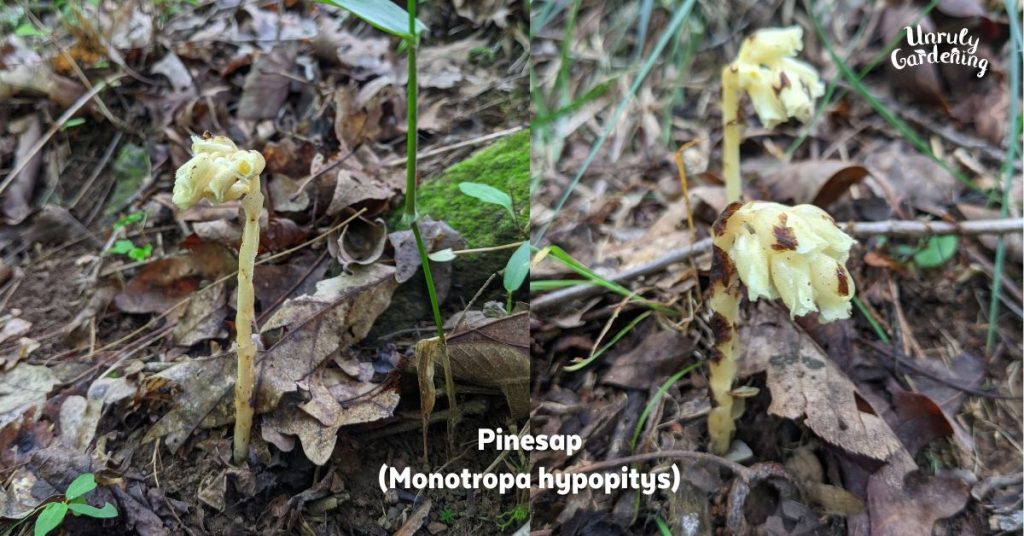
Video: Ghost Pipe Slideshow
Here’s a slideshow highlighting ghost pipe. (Sometimes an ad plays first, but the video will start right after. The video player won’t show up if you have an adblocker.)
What is Ghost Pipe Tincture Used For?
The tincture is used in small doses for those experiencing high levels of pain or anxiety attacks.
Examples of people who use Ghost Pipe are those who are battling cancer, or have unrelenting high levels of pain in spite of trying other herbs/medications/therapies, or someone who can’t function in life because of continual severe anxiety attacks.
If you have a standard sore back and muscles from working in the garden or exercising too hard – try a mullein root tincture and a pain salve instead.
You don’t need ghost pipe tincture for everyday common pains. It’s not for pregnant or nursing women, or children.

How Do You Make Ghost Pipe Tincture?
If you truly feel you have a need for the tincture and will put it to good use: Place three or four lightly rinsed ghost pipe flowers/stems (you do not need roots) in a half-pint jar. Cover with 2 to 3 ounces of 100 proof vodka – make sure all the flower parts are covered, adding more if needed. Use a pair of scissors to chop up the flowers/stems while they’re under the vodka. Put a lid on the jar, label, and tuck it away for about 4 weeks. The tincture will turn a beautiful shade of purple. Strain.
Shelf life of this tincture is 2 to 3+ years. It’s normal to lose the purple color over time and is still fine to use at that point. (Each 1 ounce = about 600 drops.)
How Do You Use Ghost Pipe Tincture?
Starting dose is usually 3 drops. Those with light body frames may find that one drop is plenty. Put 1 to 3 drops in a cup then add a little water. Drink.
Don’t use before driving, operating machinery, or going outside your house because it can cause sleepiness. It kicks in for us about 20 minutes after taking. We find it calming and relaxing, but it is a slightly strange feeling, like you’re “zooming” away from your pain.
Use at your own risk of not knowing how you’ll personally react, as the tincture is very powerful medicine and has not been well studied by modern researchers. (One of our small-framed adult family members developed nausea and an earache and headache after taking 1 drop of ghost pipe – so it doesn’t work well for everyone!)
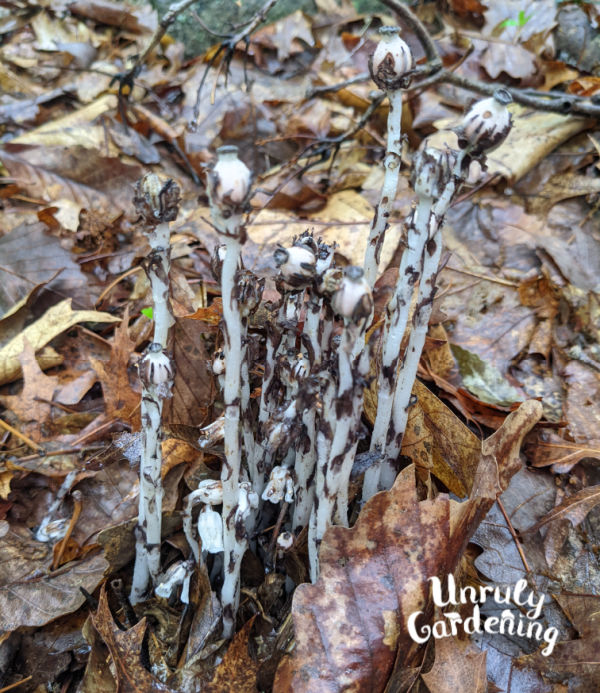
References & Further Reading
Botanical Gazette. April 1878. Volume 3, Number 4; pp. 37 – 38. A.H. Young reports on a reaction a young woman had when some of the plant juice of monotropa uniflora got on her lips.
Botanical Gazette. June 1878. Volume 3, Number 6; pp. 53 – 54. Richard E. Kunze writes a reply detailing his medicinal uses of monotropa uniflora over 23 years, with no adverse affects and wonders if the young woman from A.H. Young’s report had a reaction to Rhus toxicodendron (poison oak) instead.
Botanical Gazette. September 1878. Volume 3, Number 9; pp. 79 – 79. A.H. Young asserts he still believes the young woman’s reaction was from monotropa uniflora.
California Department of Fish & Wildlife. SPECIAL VASCULAR PLANTS, BRYOPHYTES, AND LICHENS LIST. April, 2022.
California Native Plant Society Rare Plant Inventory. Monotropa uniflora. https://rareplants.cnps.org/Plants/Details/646
Donahue, Sean. Ghost Pipe: A Little Known Nervine. American Herbalist Guild.
Felter, Harvey Wickes and John Uri Lloyd. King’s American Dispensatory, 1898.
Figura, Tomáš, et al. In vitro axenic germination and cultivation of mixotrophic Pyroloideae (Ericaceae) and their post-germination ontogenetic development. Annals of Botany. 2019 Mar; 123(4): 625–639.
Gupton, Oscar Wilmont. An Analysis of the Taxonomic Criteria as Applies to the Genus Monotropa. The University of North Carolina at Chapel Hill; ProQuest Dissertations Publishing, 1963. 6401852.
ITIS. Integrated Taxonomic Information System – Report on Monotropa uniflora.
Jansen, Suze A. et al. Grayanotoxin Poisoning: ‘Mad Honey Disease’ and Beyond. Cardiovascular Toxicology. 2012; 12(3): 208–215.
Klooster, Matthew R. and Theresa M. Culley. Comparative analysis of the reproductive ecology of Monotropa and Monotropsis : Two mycoheterotrophic genera in the Monotropoideae (Ericaceae). American Journal of Botany. First published: 01 July 2009
Leopold, Susan. A History of Parasitic Plants from Ancient Herbals to Modern Scientific Research. United Plant Savers; audio file; accessed June, 2022.
Millspaugh, Charles Frederick. American Medicinal Plants: An Illustrated and Descriptive Guide to Plants Indigenous to and Naturalized in the United States which are Used in Medicine. See pp. 411 – 414.
Native American Ethnobotany Database. Online. Accessed June, 2022.
O’Neil, Alexander R. The Population Genetic Structure of the Mycoheterotroph Monotropa uniflora L. in North America.
Tsukaya, Hirokazu. Flowering time of two saprophytic plants, Monotropa uniflora L. and Monotropastrum humile (D. Don) Hara in Japan. Journal of Plant Research.
USDA Forest Service Pacific Northwest Research Station; Climate Change Vulnerability Assessment for the Chugach National Forest and the Kenai Peninsula. See Table 6-4—List of rare plant taxa tracked by the Alaska National Heritage Program occurring in the assessment area.
Winston, David. David Winston’s Center for Herbal Studies. Facebook post about Monotropa uniflora or Indian Pipe.
Our articles are for information and idea-sharing only. While we aim for 100% accuracy, it is solely up to the reader to provide proper identification. Be sure to seek out local foraging classes and plant walks, and invest in mushroom and foraging guides suitable for the area you live in, since some wild foods are poisonous, or may have adverse effect.

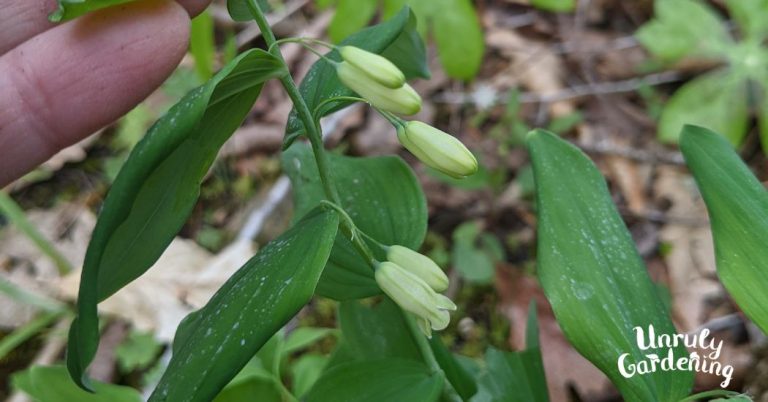
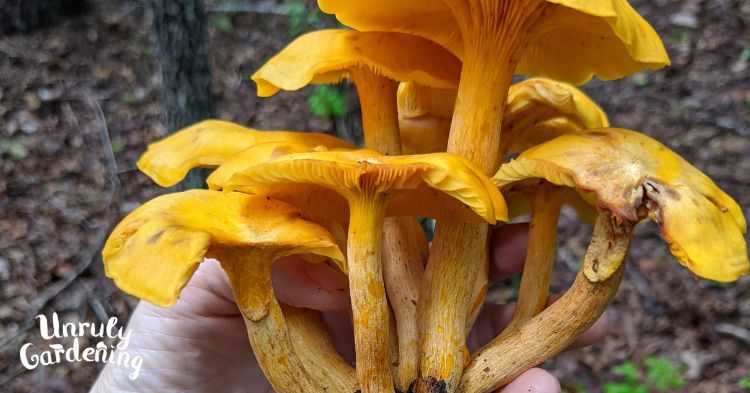
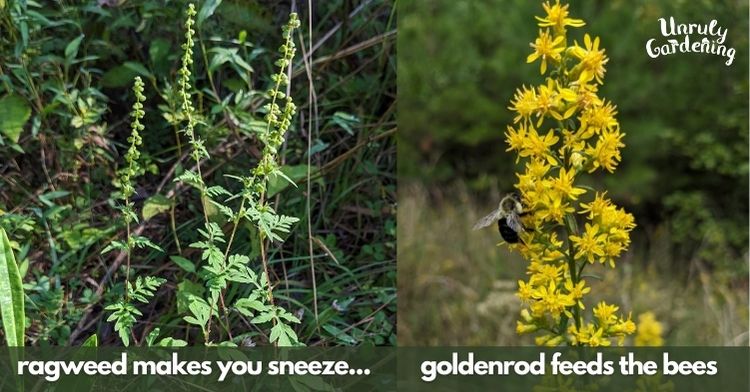
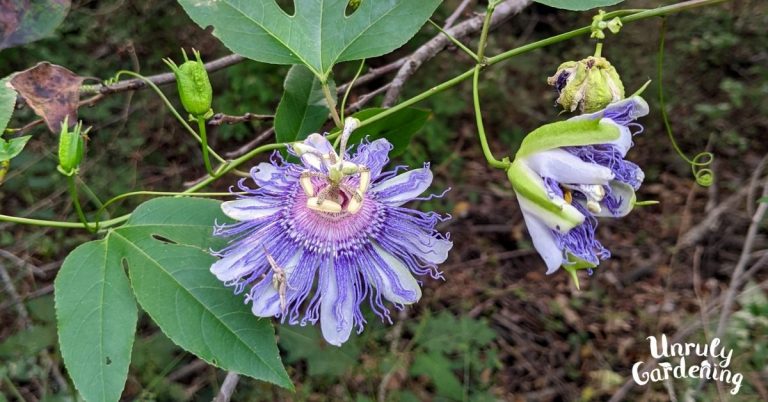
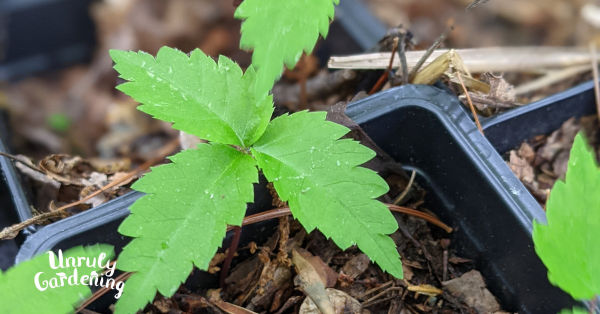
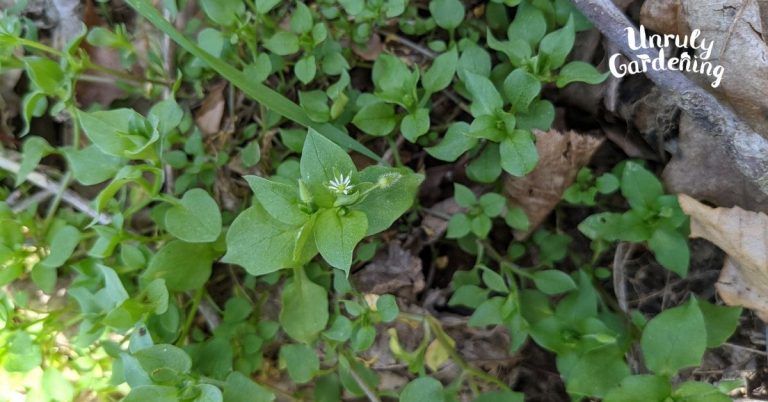
I discovered ghost pipe on our property in central Wisconcin by chance. There are several hundred plants that seem to be doing quite well. It’s good to know they are there if needed.
That’s awesome Tom! I feel reassured seeing it growing in spots around us as well – it’s good to know they’re there!
I have question does ghost pipe show up as anything on a drug test.
Hi Annette! That’s a great question! I’m not 100% sure of the answer.
I know it’s sometimes used to help people come off of a drug trip, and haven’t heard of it causing a red flag result for anyone, so my first instinct is to say it shouldn’t.
But, I haven’t seen any case studies to confirm my guess, and no one has studied all of the compounds within, so just can’t say for certain.
I wish I could help more!
First time foragers here. My fiance knows someone who may need ghost pipe for pain. We found some on our property and he harvested so many tops probably 20 and just covered them in alcohol undiluted. So we have about 1/4 mason jar of buds and alcohol that have been sitting for about 4 weeks already. How would we go about diluting this for use so it isnt so strong? Can we just add more alcohol and would we need to let it sit longer after?
Hi Jolene! Yes, you could add more alcohol to dilute the tincture. I would go ahead and strain the tincture first if it looks really strong by now.
Then you can dilute the strained tincture with regular vodka (80 proof) or any type of alcohol & use it right away.
You might not need to dilute it though.
How dark is the color?
If it’s a really dark purple, it’s likely still fine to use. If it looks almost black however, that could be a bit too strong.
If you want to send me a photo – hello @ unrulygardening .com then I’m happy to take a look at it!
One idea: when you strain the tincture – count how many flowers are in there if possible.
Then measure the amount of vodka/alcohol used.
Record the data for next time – that will give you an idea of the ratio you used for this batch and if you find it is too strong, you’ll have an idea next time of how to adjust when making.
I have taken a lot of ghost pipe and a lot of drug tests. It has never come up.
Hi Rick, Thanks for chiming in – it’s much appreciated!
Wondering if ghost pipe tincture could be added to a salve for topical use?
Hi Jennifer! While there is some historical data as far as topical use for things like sores & warts:
http://naeb.brit.org/uses/search/?string=monotropa
(from the Native American Ethnobotany Database)
I don’t believe an oil-based salve would be the best form for ghost pipe.
Alcohol tinctures tend to bead out/separate from the oils without an emulsifier, so something like a liniment might be a better form.
From my research however, it doesn’t appear to help pain when applied topically.
(Though there’s a lot that hasn’t been studied about the plant, so future information may tell us otherwise!)
Where can someone purchase ghost pipe tincture?
Hi Mary! I would suggest checking out Running Waters Homestead – they place a high priority on sustainable harvesting & I’ve had good experience ordering from them in the past:
https://runningwatershomestead.com/shop/
Hello! Thank you for writing this! I followed your instructions here to make ghost pipe tincture, but after 4 weeks, the tincture is clear and not purple. I’m now nervous to try it. Do you have any ideas of what could’ve happened?
I used three white ghost pipe stems and flowers, cut up into a few pieces under 4oz of 100 proof vodka, and let sit in a dark cabinet in a sealed glass container for 4 weeks.
Hi Sam! Sorry to hear that happened! It should have at least a little hint of purple to it – did you see any tinge of purple show up at any point in the infusion?
Do you happen to have a photo of the plants you collected?
There is a lookalike called pinesap (Monotropa hypopitys) – it starts off kind of creamy white, then can get shades of red on it.
I just updated this article to show a photo of pinesap so you can compare.
https://unrulygardening.com/ghost-pipe-faqs/#ghost-pipe-lookalike
You can also email a photo, if you have one, to hello @ unrulygardening .com and I’m happy to take a look and double check your plant!
It sounds like you did everything right, which is what makes me wonder about pinesap being used instead.
If you 100% did use ghost pipe though, then my other thought would be more flowers to alcohol ratio.
I start on the low range of the alcohol; you can always add more in later to dilute if it’s too strong.
It could also be some regional differences between size of the ghost pipe plants and what stages they are collected.
Can you use Ouzo or Everclear instead of vodka?
Hi Penelope! Yes, you can use Everclear instead. I’m unfamiliar with using Ouzo though, so not positive on that one. 🙂
Do the flowers and stems need to be fully white or is black ok? I picked some and parts of them turned black(mostly stems) before i was able to get them into some vodka. I did put them into vodka and my tincture is a dark purple. Against light you can see through it. Otherwise you cannot. I have had it in the jar for about a week. Maybe i should add more vodka to make it lighter? Or should I discard it because I cut the black stems into it?
Hi Samantha! If they were white when you picked them & you got them into the vodka within a few hours, then they should still be fine to use.
They do turn black fairly quickly, so unless you bring your bottle of vodka out in the forest with you (which isn’t really practical when you’re hiking!) 🙂 it can be hard for them not to start darkening at least some before they get tinctured.
It sounds like your tincture is the right color and strength!
So unless the flowers sat in a hot car for half a day or something like that, I would personally be likely to use the tincture.
However, if you still have a worried feel and you’re not 100% comfortable using it, then I always follow those intuitions.
I just need a bit of opinion/advice. I attempted to make ghost pipe and pinesap tinctures both are an amber color….any guesses as to why and is it safe to use? Please help?!?!? I have been waiting all year to make this I am kind of disappointed
thanks a million for your help 🍄
Hi S, I’m so sorry to hear that! Can you tell me more about what kind of alcohol you used? How much ghost pipe to alcohol ratio?
I’ve not made pinesap tincture (or found references to date, as far as using it medicinally), so am unfamiliar with what color that would turn in a tincture, but ghost pipe should have a purple hue.
Hello,
Your extract is fine. There are misconceptions about the extract having to turn purple or black to be effective. Not true. If you wildcrafted the entire aerial parts your plant material will turn black, but the solvent may stay clear. If you want the black/purple discoloration transfer from the decomp. plant just hit your extract with a stick blender at any stage of maturity and the pigmentation will release. Though the pigmentation does not reflect efficacy in any way.
Howdy,
i understand this might not exactly be your wheelhouse but you folks seem very knowledgeable so thought I’d give it a whirl. My local herbalist recommended Ghost Pipe for a lifelong struggle with anxiety specifically connecting to sleep issues, and not a whole lot of success with other herbs and supplements. First night I tried 5 drops and had success. 2nd night since I was weening myself off other things did 7 drops. It seems if I don’t fall asleep quickly then it won’t happen at all and some time had passed. Started to panic. Since I had read on Sean Donahue’s piece he had used up to three 1ml tinctures (I believe 1 ml is dropperful), took 1 dropperful. waited a little while, still up,then took 2 more dropperfuls. Definitely felt like that was too much. Had a period I still wasn’t sleeping but must have finally slept as I awoke at some point and realized I had had a strange dream. Can you give any advice or share experiences about usage and dosage. I’m heartened I had some success but know 3 dropperfuls is definitely too much for me but don’t want to go too low either
Hi Eli! Most of us have the opposite effect here, where we have to ultra low dose everything because we react quickly & hard to many supplements.
So we don’t have personal experience with high doses, though I have seen the Sean Donahue piece about using higher amounts too.
The main member who uses occasional ghost pipe for similar reasons, also finds this daily supplement most helpful, in case it hasn’t been on your radar already:
https://painstresscenter.com/products/ac
This combination seems to be a good synergy for their unique body chemistry, so maybe it’s not that you need more ghost pipe, but a matter of pinpointing exactly what you took/ate/watched/experienced/etc the same night that the 5 drops worked well & finding that perfect mashup for you.
I wish I had more to offer about higher dosing, but agree with you that it’s a promising sign that it worked at one point!
I’ve been making tinctures of ghost pipe for years and find it’s effects wonderful. Used primarily as a sleep aid, it’s worked wonders for me when I get bouts of insomnia. I also have a history of severe migraines and lower back pain. It’s a remedy that works! I live in Vermont surrounded by high elevation old growth forest and it’s beyond plentiful here, so I’m fortunate to have easy access to it. 4-6 drops is my magic number. Should also be noted it’s a recognized remedy for not only physical pain, but emotionao and mental pain stemming from trauma, depression, anxiety, etc. as well. I’ve never had an unpleasant experience with it, and some years I may only use it a handful of times – it truly is a sacred plant and should be respected. I hope modern botanists, ethnobotanists, medical researchers, organic chemists, etc. can more fully research this in the years to come – it deserves the attention, but I also worry about this becoming mainstream and trendy and over-harvested, much like Chaga has become lately. Just my thoughts….
This is an informative introductory article that I’ve shared with many people: Ghost Pipe- A Little Known Nervine – American Herbalists Guild https://www.americanherbalistsguild.com/sites/default/files/donahue_sean_-_ghost_pipe-_a_little_known_nervine.pdf
Hi Neil, Thank you for sharing your helpful information and experiences with ghost pipe!
I have a special relationship with this plant, it came into my life 3 years in a row by unexpected means, all in the same weekend of the year. I found it incredibly strong, and I am someone who takes hero doses of most herbs to see results. Less is more, in my own experience. A drop is all that is needed, and I found it a powerful trauma releaser. It was quite scary actually, completely unexpected. If something is sitting in you, it will get it out. The first year, I stumbled on it hiking, and recognized it after having had it described to me from a colleague. I ran to town, got some vodka, and headed back to find it. My fingers were black by the time I was home. I think is is a very special plant, like them all, but something very powerful about this one. Drop dosing for trauma release, and with caution. The following year was different. I received a text from my daughter who was travelling (who never texts me!) with a photo of Ghostpipe. She then picked it and tinctured it. This time was different, I went in with eyes wide open and asked the plant if I should take it. The result was still unexpectedly strong! Basically just really strong emotions, but I just went on tbe ride this time. Kinda like the worst PMS bad mood day ever.
Very interesting “plant”
Hi Jenny, Thank you so much for sharing your experiences with ghost pipe! It really is a fascinating plant!
Jan, a friend and I went looking for chanterells and stumbled into hundreds of Ghost-pipes. We didn’t know about using alcohol for a tincture till we got back to where we had cell service. We had picked about 30 and bought 100% Vodka on the way home. We used a mason jar, cut the Ghostpipes and filled the mason jar. 2 day the contents are black. From what I’ve read here I will need to dilute a bit after 4 weeks.
So I’m wondering if by waiting an hour to get the GP’s in the alcohol what could go wrong?
Hi Dave, What a great find!
I think the flowers should be fine in that one hour window.
I wouldn’t use completely black or disintegrated flowers that had been cut for hours, but if they were just aging a tiny bit and still mostly white, I personally wouldn’t have a problem using them.
Can you store the flowers by freezing or drying them? We get them each year but some years, like this one, we get way more
Hi Derek! I recently watched an excellent webinar with Dr Eric Burkhart of Penn State & his grad student, who is studying ghost pipe, and he mentioned that traditionally, the plant was used in the dried form, but over time it became popular to use it as an alcohol extract instead.
I’ll need to re-watch the webinar when the replay link is published, to be certain of exact wording, but I believe he suggested drying at 95 degrees F with circulating air.
Testing out dried flowers is high on my priority list!
We’re having a lower flower year so far (because of a very dry spring impacting early bloomers), but one of my best ghost pipe spots should produce flowers later in the year, so hopefully I’ll have several flowers to dry and experiment with.
I’m not sure about freezing though.
Thank you for the information. I sent an email with a photo, but I have another question here.
I found one cluster of 18 plants with a group of 12 dried plants. Is this common or rare?
I am a bit late finding them as I found them today August 16th. I am in the Upper Peninsula of Michigan so maybe our season is a bit different than southern states?
Hi Dennis! I got your email and replied earlier today; hope you got that message!
That sounds like a good grouping of plants; I would classify that as common & personally harvest from an area like that.
Hello I have a 32 oz mason jar completely full of ghost pipe that I covered with ever clear after reading your article about only needing a few pipes should I dilute my tincture with water?
Hi Sheila! I would test the tincture (one drop) and see if you can gauge the strength before diluting.
A larger amount of fresh plant matter may mean a larger amount of water content, so it may all balance out.
About the leftover flowers and stems of the ghost pipe that you made the tincture out of… what to do with them? Can they be dried, frozen, eaten, made into a spread? What do you do with your leftovers?
Hi Colleen! I just discard the leftovers outside, because most of the beneficial compounds should now be in the tincture.